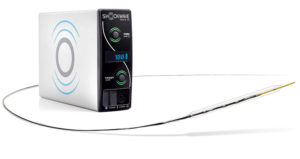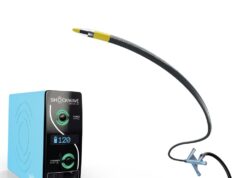
Shockwave Medical today announced commercial availability of the Shockwave S4 peripheral intravascular lithotripsy (IVL) catheter in select approved geographies. Shockwave S4 is a low-profile catheter specifically designed to access and treat challenging calcified lesions in below-the-knee (BTK) arteries that are frequently associated with critical limb ischaemia (CLI).
“The novel Shockwave S4 IVL catheter has the potential to change the treatment paradigm for our most difficult-to-treat patients—those with non-healing ulcers and wounds on their lower limbs due to lack of sufficient blood flow which we call Critical Limb Ischemia or CLI,” said George Adams of UNC REX Health in Raleigh, USA, one of the first US physicians to use the new device. “IVL offers great promise as outcomes in patients with CLI remain poor, particularly for those who have significant, difficult to treat calcification of the small arteries below-the-knee.”
According to a press release, IVL is an innovative therapy designed to treat calcified artery stenoses with lithotripsy—sonic pressure waves historically used to treat patients with kidney stones. The technology minimises trauma within the artery by delivering pulsatile sonic pressure waves locally that fracture calcium inside the artery wall but pass through surrounding soft vascular tissue in a safe manner.
Shockwave S4 complements the existing larger-diameter Shockwave M5 IVL catheter, which has been available in the USA since 2017 for the treatment of calcified peripheral artery disease. Shockwave S4 features many design modifications to enhance deliverability in small, distal vessels of the legs, including a longer, hydrophilic shaft, a lower crossing profile, and a lower tip profile.
“We are committed to optimising IVL for specific patient populations and anatomies, and one of the most challenging is patients with below-the-knee disease suffering from CLI,” said Doug Godshall, chief executive officer of Shockwave Medical. “We look forward to continuing to roll out Shockwave S4 over the coming months to provide our customers with a tool that we hope will help them achieve a high degree of luminal gain with decreased vessel recoil and minimal complications with the ultimate goal of reducing the frequency of amputation.”













